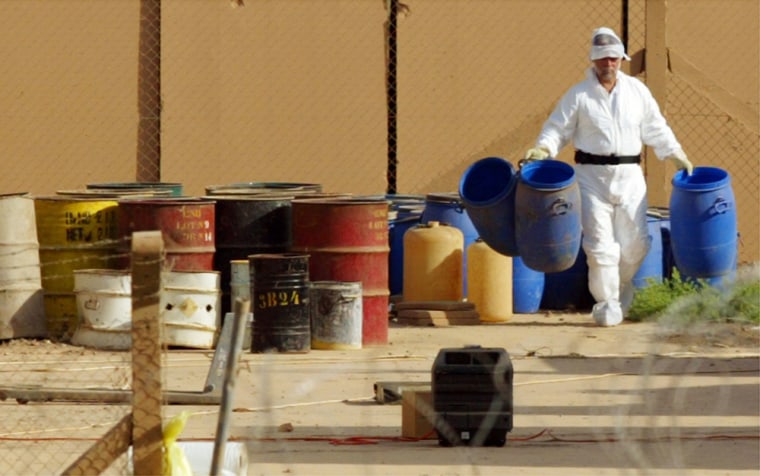U.N. nuclear inspectors are welcome to return to Iraq to check for any missing equipment and materials, an Iraqi government minister said on Tuesday.
Iraq’s Science and Technology Minister Rashad Omar made the offer in response to concerns raised by the International Atomic Energy Agency that equipment and materials that could be used to make nuclear weapons are disappearing from facilities in Iraq,
The IAEA reported on Monday that neither Baghdad nor Washington appeared to have noticed the disappearance of nuclear equipment and materials once closely monitored by the agency.
“The locations that belong to the Science and Technology ministry are secure and under our control,” Omar told Reuters.
He said nothing had disappeared since a looting spree shortly after last year’s U.S.-led invasion, which the United States and Britain said was to rid Iraq of weapons of mass destruction. Both countries now admit Saddam had no banned weapons.
Omar said Tuwaitha, a vast compound south of Baghdad that included Iraq’s main nuclear facility, was being turned into a science park. “The IAEA came back one month ago, they inspected the plant and others and didn’t say anything.
“We are transparent. We are happy for the IAEA or any other organization to come and inspect,” he said, adding that he had not seen the agency’s report to the Security Council.
In its report on Monday, the IAEA said that satellite imagery shows that entire buildings in Iraq have been dismantled. They once housed high-precision equipment that could help a government or a terrorist group make nuclear bombs, the agency said in a report to the U.N. Security Council.
Equipment and materials helpful in making bombs have also been removed from open storage areas in Iraq and have disappeared without a trace, according to the satellite pictures, said Mohamed ElBaradei, director-general of the IAEA.
Potential bomb-making materials said missing
While some military goods that disappeared from Iraq after the U.S.-led invasion in March 2003, including missile engines, later turned up in scrap yards in the Middle East and Europe, none of the equipment or material known to the IAEA as potentially useful in making nuclear bombs has turned up yet, ElBaradei said.
The equipment — including high-precision milling and turning machines and electron-beam welders — and materials like high-strength aluminum were tagged by the IAEA years ago, as part of the watchdog agency’s shutdown of Iraq’s nuclear program. U.N. inspectors then monitored the sites until their evacuation from Iraq just before the war.
The United States barred the inspectors’ return after the war, preventing the IAEA from keeping tabs on the equipment and materials up to the present day.
Under anti-proliferation agreements, the U.S. occupation authorities who administered Iraq until June, and then the Iraqi interim government that took power at the end of June, would have to inform the IAEA if they moved or exported any of that material or equipment.
But no such reports have been received since the invasion, officials of the watchdog agency said.
The United States also has not publicly commented on earlier U.N. inspectors’ reports disclosing the dismantling of a range of key weapons-making sites, raising the question of whether it was unable to monitor the sites.
‘We simply don’t know’
In the absence of any U.S. or Iraqi accounting, council diplomats said, the satellite images could mean that the gear had been moved to new sites inside Iraq or had been stolen. If stolen, it could end up in the hands of a government or a terrorist group seeking nuclear weapons.
U.S. officials had no immediate comment.
President Bush, locked in a tough re-election battle with Sen. John Kerry of Massachusetts, justified the war, in part, by saying Iraqi President Saddam Hussein was on the brink of developing a nuclear bomb that he might use against the United States or give to terrorists.
The men agreed during their debate Sept. 30 that nuclear proliferation was the most serious threat facing the United States.
A new CIA report last week by the chief U.S. weapons investigator, Charles Duelfer, made it clear, however, that Saddam had all but given up on his nuclear program after the first Gulf War in 1991.
ElBaradei, whose agency dismantled Iraq’s nuclear arms program more than a decade ago, drew similar conclusions to those of the Duelfer report well before the March 2003 invasion.
